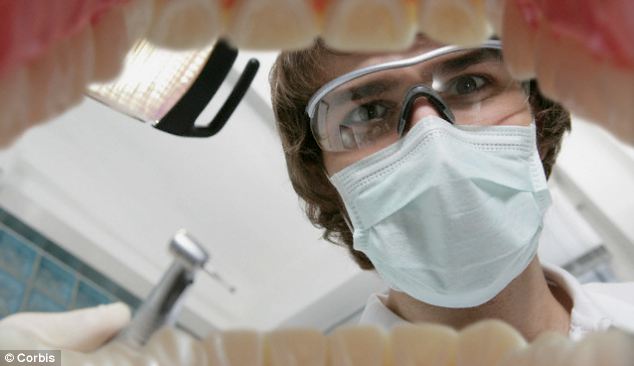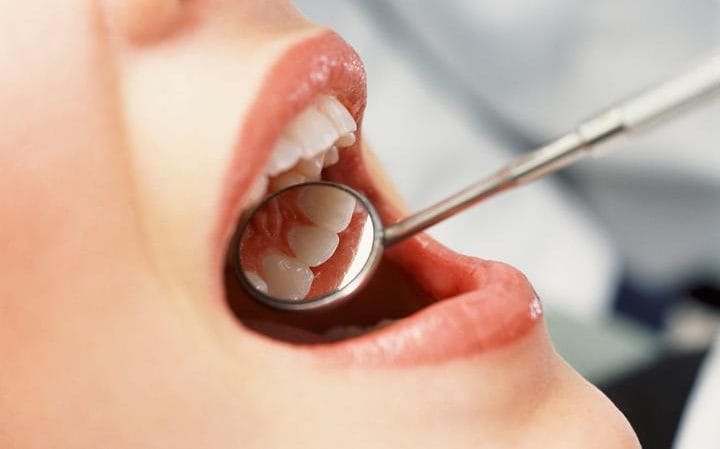It’s no secret that each and every day, experts from all over the world issue fresh warnings about what is and is not good for our teeth. One minute it’s the kind of thing that’s considered nothing but beneficial – the next it’s something to avoid at all costs. But as far as today’s example goes, there’s an apparent threat to our teeth that may be somewhat more difficult to avoid.
And that threat is, breathing.
Or more specifically, inhaling cold air. As far as the latest warnings are concerned, the public in general is being reminded that while teeth are indeed extremely strong and resilient, they are not in any way immune to extreme temperatures. Absolutely every part of the body from top to bottom reacts in a certain way when exposed to extreme temperatures – including our teeth. As is the case with many materials, colder air has the potential to cause teeth to contract and then once again expand as they return to their normal temperature. And just as is the case with other materials, this has the potential to lead to cracks.
Think of it a little like the way in which it is inadvisable to pour hot water over a frozen windscreen. Doing so can lead to breaking the glass due to exactly the same expansion and contraction, albeit on a rather more severe level. As such, experts advise heightened awareness of taking deep breaths of cold air, in order to avoid these hairline cracks appearing in the first place.
“Cracks are a real thing,” said Dr. John Fornetti of the John Fornetti Dental Center.
“You know, so people get cracks in their teeth, and they can be devastating at times. So, it is something to keep in mind about…thinking about the cracking, but I think it’s more from clenching and grinding our teeth, which 85 percent of us do.”
While it’s not the kind of thing anybody would do deliberately or knowingly, experts state that most people entirely without their knowledge grind their teeth when the weather is particularly cold. Not only does this clenching or grinding action have the potential to cause damage to the teeth in its own right, but it can also expose the teeth to further damage when taking deep breaths of cold air. This includes both the teeth themselves and their roots, which can become exposed as a result of jaw clenching.
“Root structure does not have any enamel on it, so we have a pathway for whatever enters our mouth to stimulate the nerve and, consequently, you have something called pain,” Dr. Fornetti said.
According to this particular expert, the best advice therefore is to proactively avoid exposing your teeth to cold air by getting into the habit of breathing through your nose when and where possible. He also recommends using the best electric toothbrush for sensitive teeth and an equally high-quality toothpaste, should you experience pain or discomfort during cold weather conditions.

Bye Bye Fillings
Meanwhile, anyone who is fundamentally terrified of the dentist’s drill…which is of course about 99% of us…may be pleased to hear that conventional fillings may soon be eradicated once and for all. It is estimated that close to 95% of all adults will be affected by tooth decay at some point in their life, meaning that most of us will have to have at least one or two fillings. Things have come a long way, but it still isn’t what you’d call a pleasant procedure.
However, new research suggests that a drug commonly used in the treatment of Alzheimer’s could have the potential to lead to the regeneration of the enamel itself, effectively prompting teeth to repair themselves and negate the need for fillings. As part of the study, researchers drilled tiny holes in the teeth of laboratory mice, before applying the drug known as Tideglusib. The complicated science behind Tideglusib isn’t necessarily important, but what is important is the way in which the drug showed great promise in stimulating cellular-based repair of the teeth to which it was applied. So much so that after just four weeks, many of the holes in the teeth of the mice had for the most part repaired themselves.
“It greatly enhanced what the tooth tries to do naturally, but it does it in a much more robust way and much quicker,” says Sharpe, who published the findings in the January issue of Scientific Reports.
“The next step would be to create an infected tooth to see if the therapy works when you have inflammation present, and then you could go to larger animal models.”
On the downside, those behind the study admitted that even if the positive results continue, it will probably be a considerable amount of time before the same treatment can be used on human beings. As such, the best advice in the interim is to do your best to avoid cavities in the first place, using the very best electric toothbrush on the market recommended by dentists!
Wino Sippers
Last but not least, anyone who values both the pleasure of red wine and the whiteness of their teeth may be pleased to hear that a creative company has finally come up with what could be the perfect product. Not only is red wine delicious, but in small amounts has been linked to a wide variety of health benefits – including a healthy heart. Nevertheless, the fact that it has a tendency to stain your teeth the most unattractive colour isn’t exactly one of its key selling points.
Which is precisely why the folks behind Wino Sippers will no doubt prove to be very popular over the coming months and years. Quite simply, they’ve taken the concept of the standard wine glass and added a (sort-of) elegant straw into the mix. This way, you can enjoy your tipple of choice without having to worry about staining your teeth or having a disposable straw on hand at all times.
They might look a little silly, but they could certainly save you a fair bit of money on expensive teeth whitening products!
